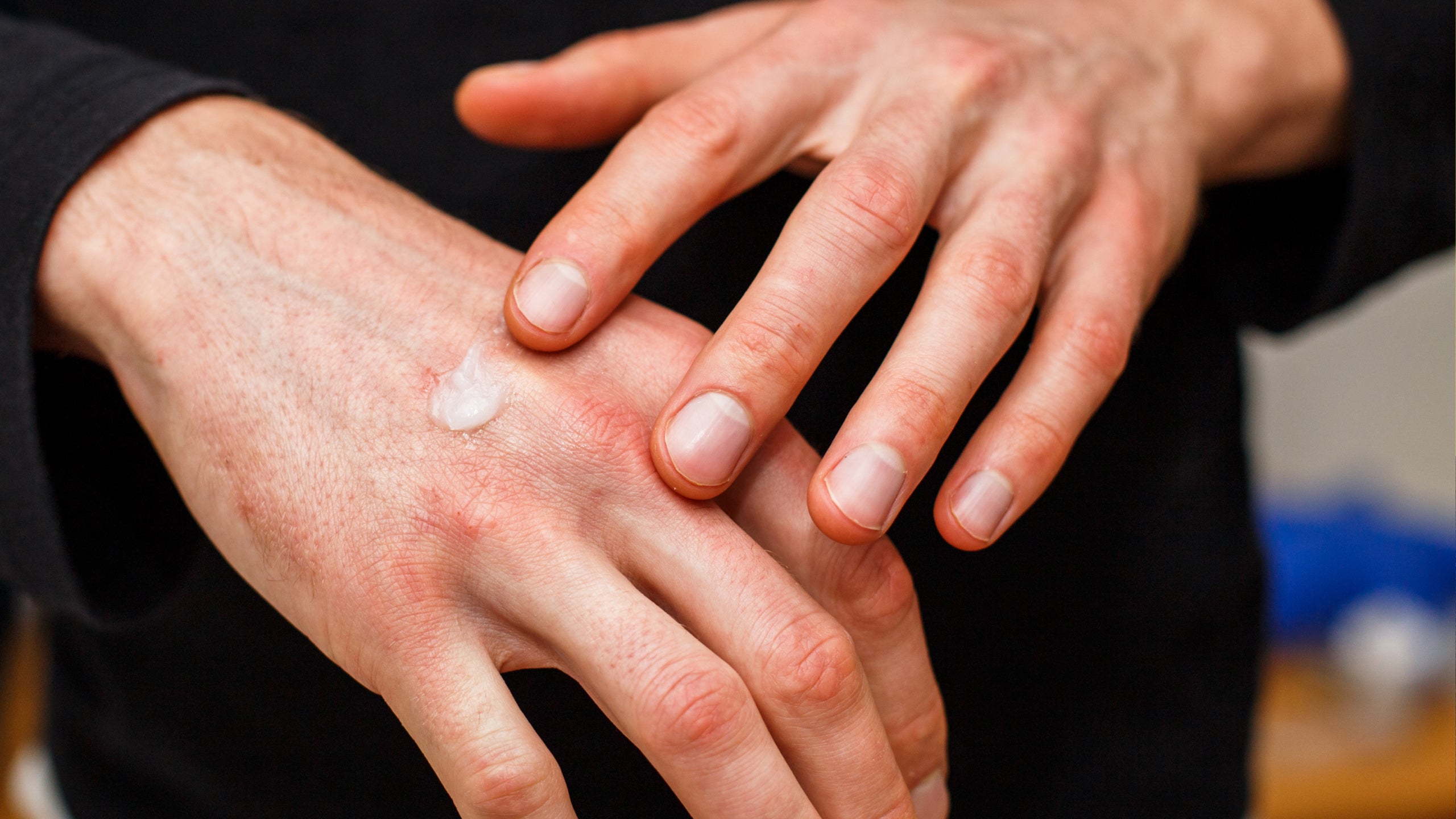Topical steroids are go-to drugs in dermatology and are often prescribed to people with eczema. Because they’re affordable, easy to access, and recommended by doctors, many people are quick to apply steroids to their skin. Like with any medication, however, it’s important to understand what they are in order to decide if they’re the right treatment for you.
Topical steroids are a type of steroid medication that’s applied directly to the surface of the skin. With anti-inflammatory and immunosuppressive properties, these topical drugs reduce the irritation and inflammation associated with eczema.
Types of Topical Steroids
Topical steroids come in many forms, including:
- Creams
- Ointments
- Lotions
- Gels
- Mousses
- Solutions
- Bandages
Corticosteroids come in four different strengths: mild, moderate, potent, and very potent. Mild topical steroids like hydrocortisone cream are available over-the-counter. More potent options require a prescription. The potency your doctor recommends will depend on your age, the severity of your eczema, and where your eczema is on your body.
How to Use Topical Steroids
Ask your healthcare provider for specific instructions on how to apply topical steroids correctly. As a general rule, topical steroids should be used sparingly. Exercise care and caution if you’re using steroids on areas of the body with thinner skin, such as the face, eyelids, scalp, neck, breasts, and groin.
When it comes to topical steroid use, more isn’t always better. Although most topical steroid instructions will tell you to apply the product once or twice daily, one study found that applying corticosteroids to the skin more than once daily has no benefit and only increases your risk of side effects. Many people will also only need to use the medication for one to two weeks. If you’re using steroids for an extended period of time, your doctor may recommend taking breaks between treatments, or taping off the steroids in order to avoid a rebound flare. Ultra-high potency steroids should not be used for more than 3 weeks in a row.
Fingertip Units
Sometimes doctors will prescribe the amount of medication to use based on fingertip units (or FTUs). One FTU is approximately 500 mg. It’s the amount needed to squeeze a line of product from the tip of an adult finger to the first crease.
The recommended amount of FTUs depends on the location you’ll be applying the steroid as well as your age. Children will require less FTUs than adults.
The general FTU recommendations for adults are:
- 0.5 FTU for genitals
- 1 FTU for hands, elbows, and knees
- 1.5 FTUs for feet
- 2.5 FTUs for face and neck
- 3 FTUs for scalp or arms
- 4 FTUs for buttocks
- 6 FTUs for legs
- 8 FTUs for chest or back
Topical Steroid Cream Side Effects
The most common symptoms of steroids for skin are burning or stinging when applied. This tends to lessen as the skin adjusts to the treatment.
Less common side effects include:
- Thinning of the skin
- Stretch marks
- Inflamed hair follicles
- Worsening or spreading of a skin infection (if one already exists)
- Contact dermatitis as a result of mild allergic reaction
- Rosacea
- Acne
- Changes in skin color (more common in people with darker skin tones)
- Excessive hair growth
Risk of side effects increases if you’re using a potent steroid, you’re using the steroid on a large area, or you’ve been using the steroid for a long time. The elderly and young children are also more susceptible to side effects.
Topical Steroid Withdrawal
While you can experience a reaction to topical corticosteroids while using them, you can also have an unwanted reaction following recurrent steroid use or when you stop using steroids on your skin. This is called topical steroid withdrawal (TSW), or Red Skin Syndrome. Many healthcare providers have not heard of TSW, and others do not recognize it as an iatrogenic condition because it does not have a formal diagnostic criteria. There has been little clinical research into TSW to date, although some recent literature reviews, articles, and op-eds by dermatologists call for more research and clearer diagnostic criteria.
Topical steroid withdrawal occurs most often when you’ve been using a potent steroid frequently for a prolonged period of time. Topical steroid withdrawal symptoms include:
- Raw, red skin
- “Red sleeve” (Redness that ends abruptly in a noticeable line at the wrist or ankles)
- “Elephant wrinkles” (Thickened, wrinkly skin, particularly around the knees)
- Blistering
- Flaking, with very fine scale described as “snow”
- Pain described as “zingers”
- Oozing
- Swelling
- Swollen lymph nodes
- Sensitivity
- Insomnia
- Depression
If you’ve been using a high-potency steroid frequently and/or for a long period of time, consult with your primary healthcare provider or a board-certified dermatologist before stopping treatment. For more information on Topical Steroid Withdrawal, check out the advocacy group ITSAN.
How to Treat Eczema Without Topical Steroids
Topical steroids remain the most commonly prescribed treatment for eczema, yet they’re far from the only option.
Gladskin Eczema Cream is a steroid-free option for people with eczema-prone skin. Dermatologists now know that an imbalance in the skin’s natural microbiome leads to eczema itch, redness, and discomfort. Gladskin Eczema Cream works with your skin — instead of against it — to restore balance to your microbiome so the skin can heal. It’s clinically tested, cleanly formulated, and moisturizing, making it safe for everyone three months and older. Four out of five users experience relief from eczema itch and redness. It’s even effective for most people in as little as a few days. Learn more.

